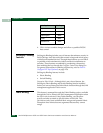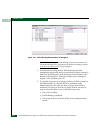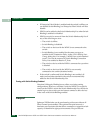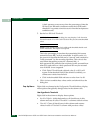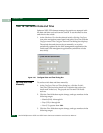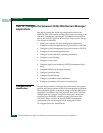
2
Open Trunking
2-69
Installation Tasks
available to upgrade the Sphereon 3232 Switch from 16 to 24 ports, or
from 24 to 32 ports.
Each port expansion kit includes eight SFP optical transceivers and
upgrade instructions.
To enable the added port capacity through the element manager
application, a feature key must be purchased and installed through
the Configure Feature Key dialog box. There are no other
configuration options in the SAN management application or
element manager for this feature.
Open Trunking
Interswitch links (ISLs) connect ports between E_Ports on Fibre
Channel switches and link these switches into a multiswitch fabric.
Multiple ISLs may be connected between the switches in the fabric.
Data from an attached end device (server or storage) flows through
these ISLs to a target end-device connected to a switch somewhere in
the fabric. A data flow is data received from a specified receive port
that is destined for a port in a specified target domain (switch). The
list of ISLs that are candidates for being rerouted (to or from) is
derived from the fibre shortest path first (FSPF) algorithm.
The Open Trunking feature monitors the average data rates of all
traffic flows on ISLs (from a receive port to a target domain), and
periodically adjusts routing tables to reroute data flows from
congested links to lightly loaded links and optimize bandwidth use.
The objective of Open Trunking is to make the most efficient possible
use of redundant ISLs between neighboring switches, even if these
ISLs have different bandwidths.
Load-balancing among the ISLs does not require user configuration,
other than enabling Open Trunking. However, you can modify or
“tweak” default settings for congestion thresholds (per port) and low
BB credit threshold if desired.
In particular, you do not need to manually configure ISLs into “trunk
groups” of redundant links where data can be “off-loaded.”
Candidate links for rerouting flow are identified and maintained
automatically. This means that flow may be rerouted onto a link that
goes to a different adjacent switch, as long as that link is on the least
cost/shortest path to the destination domain ID.




